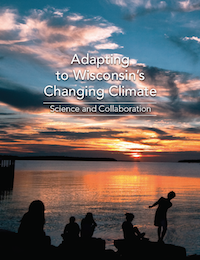Publication tells how climate change data affect natural resource decisions
A wide array of natural and human systems are feeling the effects of Wisconsin’s changing climate. But the state is adapting in a variety of ways to a warmer, wetter climate that is projected to see more frequent droughts, heat waves and heavy rainfalls by mid-century.

In a recently released publication, “Adapting to Wisconsin’s Changing Climate: Science and Collaboration,” the Wisconsin Initiative on Climate Change Impacts (WICCI) provides examples of how climate data extracted from global-scale models and “downscaled” to Wisconsin are being used to make sound management decisions for natural resources and the built environment.
“The climate data we generated are particularly useful when applied to real-life issues,” says Dan Vimont, one of WICCI’s lead scientists from the University of Wisconsin–Madison’s Center for Climatic Research within the Nelson Institute for Environmental Studies.
Department of Natural Resources biologists are using the data to show which trout streams in the Driftless Area in southwest Wisconsin are projected to be resilient to warmer temperatures and which ones will suffer to the point of no longer supporting such a fishery. The agency is currently developing a long-term plan identifying where it may, or may not, purchase public access lands or manage fish habitat in the future.
Some communities, such as the city of La Crosse, are using the data to implement better water infiltration plans to accommodate larger storm water flows and prevent flooding. Others are developing strategies to protect their most vulnerable populations — the elderly and the poor — from prolonged heat waves.
The eight-page publication is available online as a PDF document. Hard copies can be ordered in large quantities by email.
—Carolyn Rumery Betz




